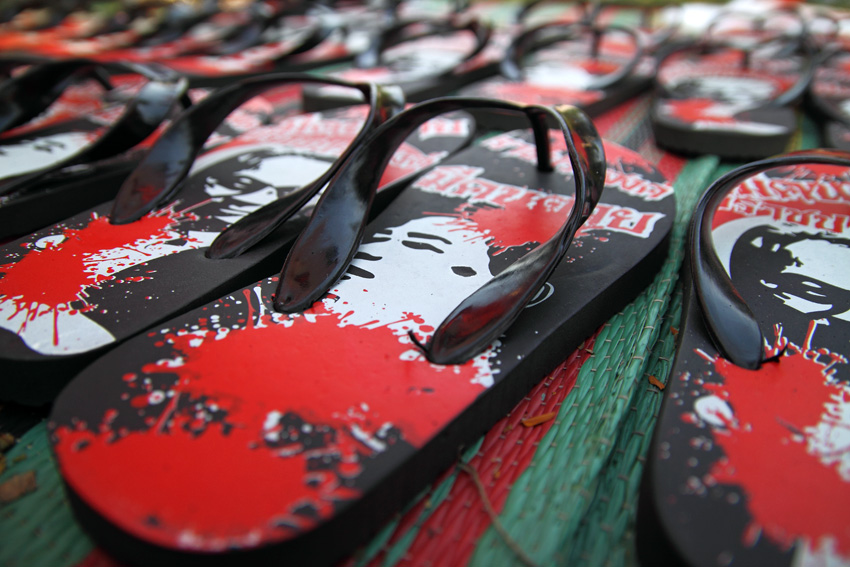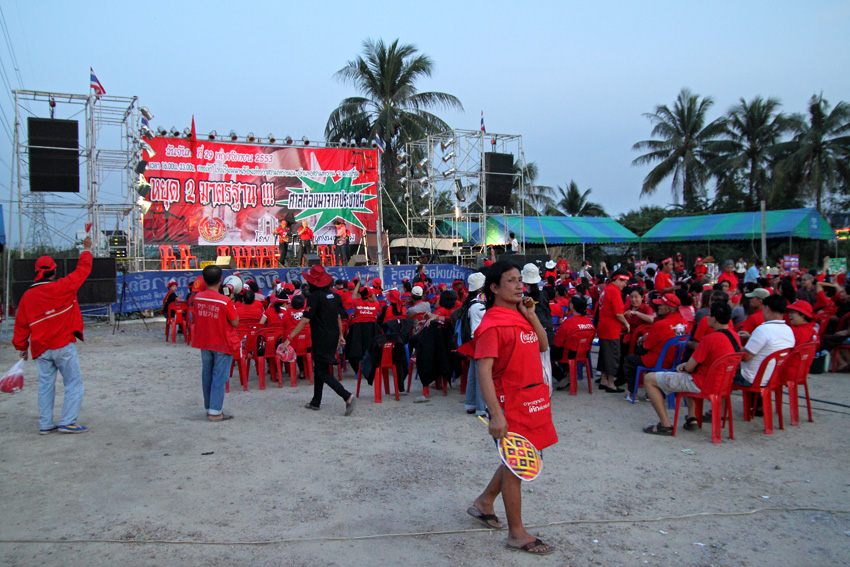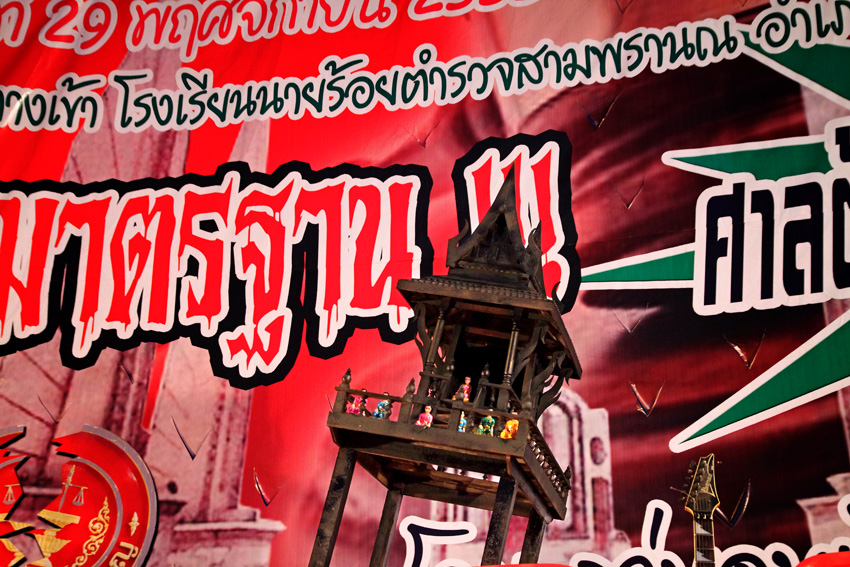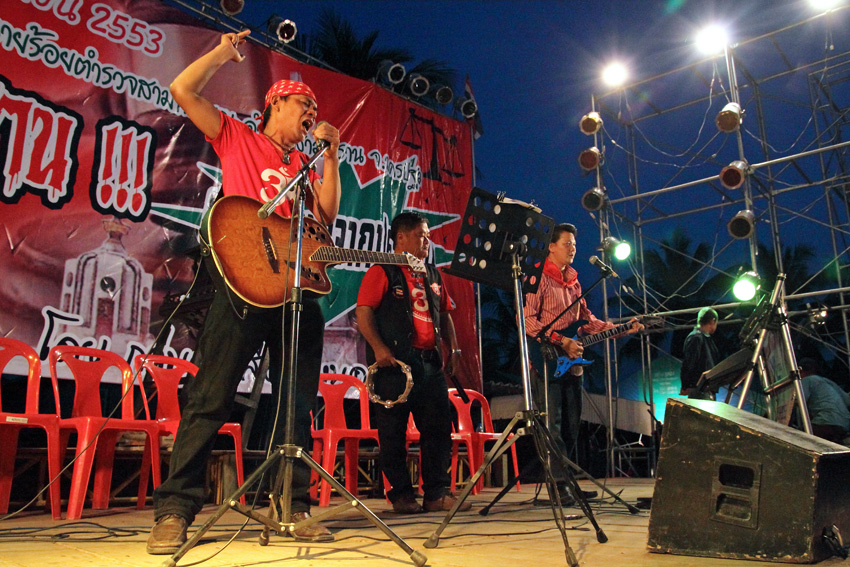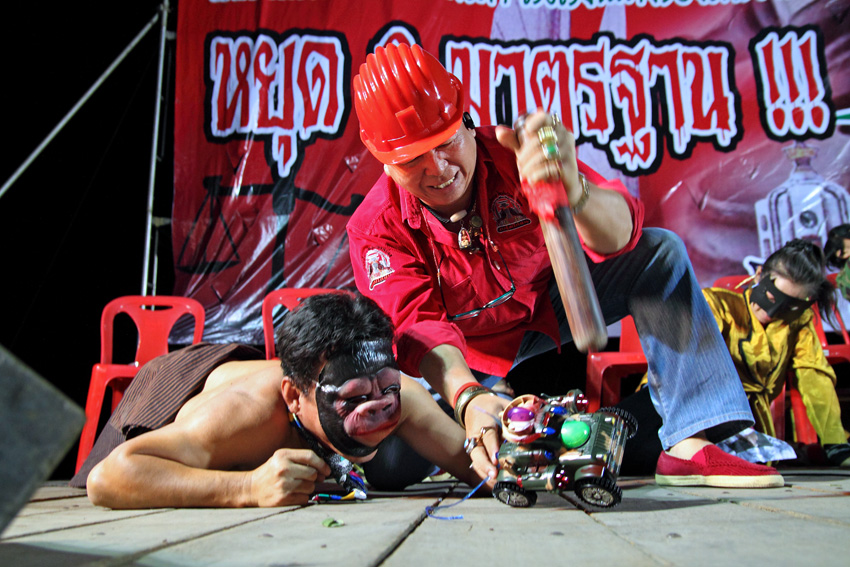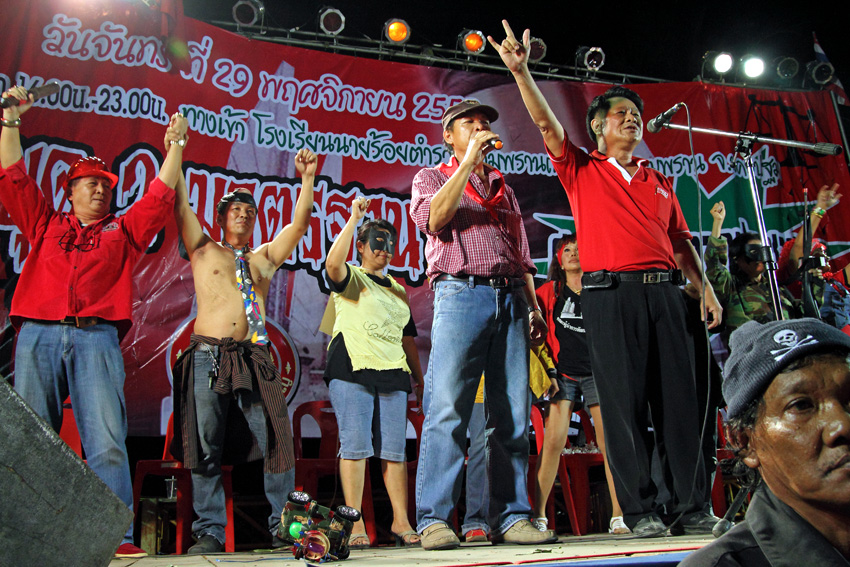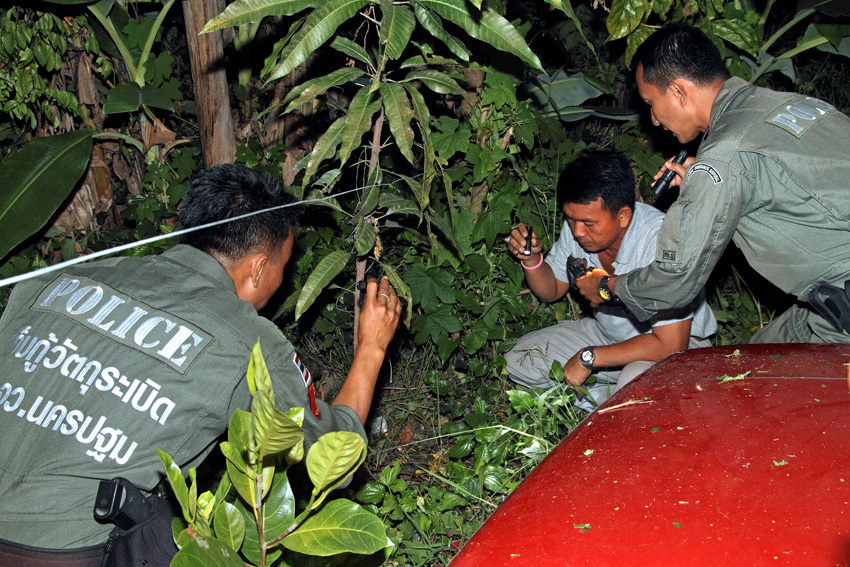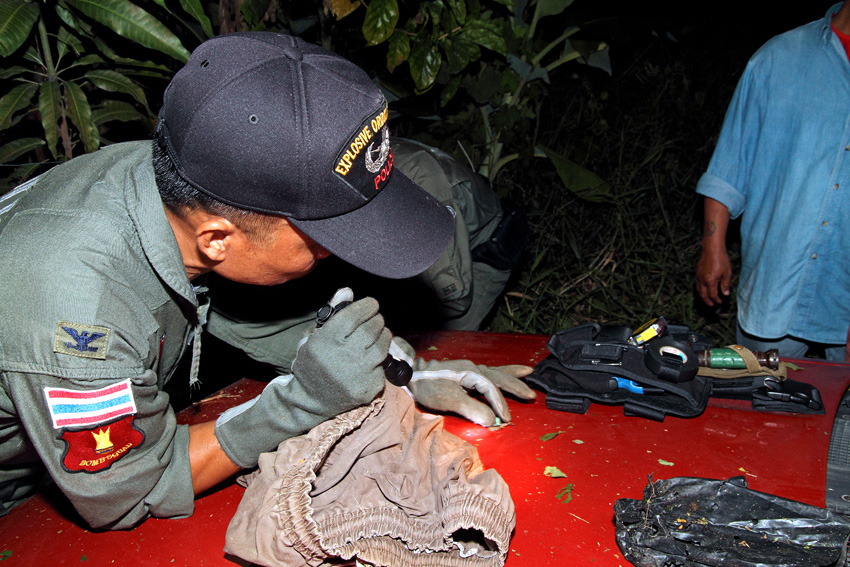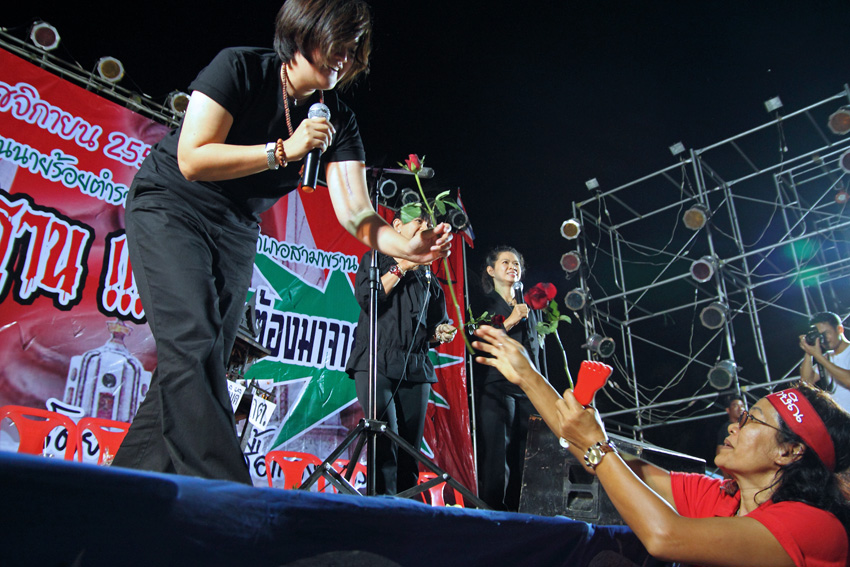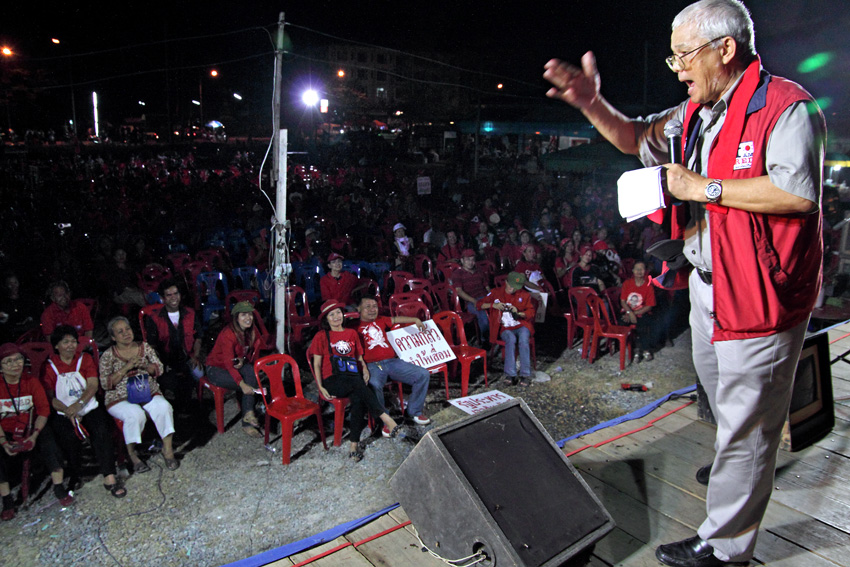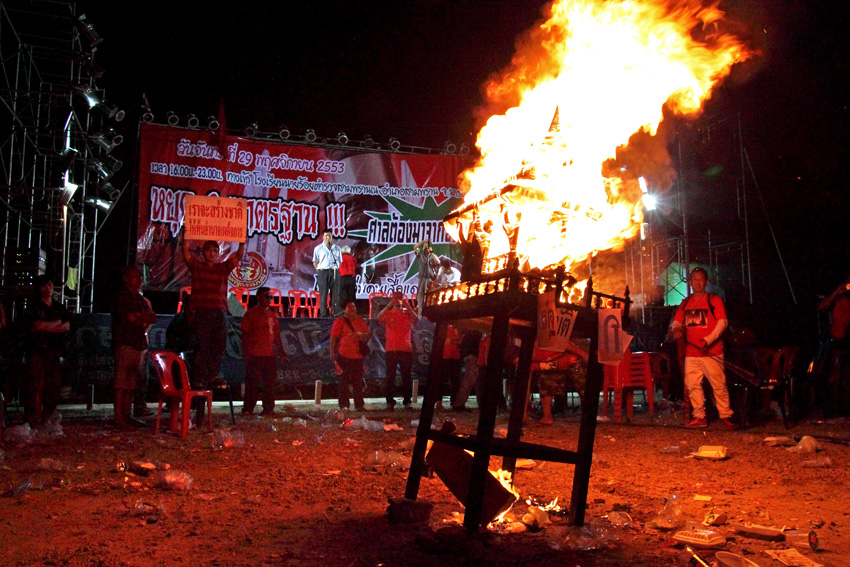The afternoon of the Democrat Party dissolution case on 29 November 2010, I drove to a small Red Shirt event in Samphran, Nakhon Pathom province, about one hour outside of Bangkok. The local Red Shirt group organised a stage there. There was quite a police presence, but not overwhelmingly so. The province is not under the Emergency Decree, so the Red Shirts were free to have a stage with proper loudspeakers. When I arrived the stage was not open yet, the power generator had not arrived. Walking through the usual market I noticed a stall selling the offending slippers with images of Suthep and Abhisit; their sale is now in legal limbo.
By sunset the stage opened, and more people began arriving, altogether between 1000 and 2000. On the stage was an eye catching installation – a spirit house leaning towards one side. This was a perfect example of double meanings in the Thai language and its deeper symbolisms to circumvent forbidden subject matters so common today. In Thai, the word for a legal court is “sarn”, while also the colloquial for spirit house, “sarn phrapoom”, is also “sarn”. On the stage they had now a “sarn” leaning over to one side, without falling under the harsh laws dealing with criticizing courts and their decisions. “Sarn eang” can have two meanings in Thai – ‘biased court’, or ‘spirit house leaning over’. “Da sawaang”, loosely translated as ‘eyes wide open’, another new and seemingly innocent expression with potentially explosive connotations was regularly expressed as well, both on and off the stage. Much of the political discourse in public is now dominated by such coded expressions.
Lacking top level Red Shirt leaders who went that day to another event in Khorat, most speakers on the stage were ordinary Red Shirts, mostly not very accomplished as public speakers, but with much heart and conviction. The only prominent Red Shirts there were Somyod Prueksakasemsuk, leader of the small 24 June Group, three pro-Red Shirt academics, and Phuea Thai party list MP Sunai Chualpongsathorn.
In between the speeches, musicians played protest songs to which people danced. When a political satire was performed on the stage suddenly the noise of an explosion was heard behind the stage, at 20.55.
People from the tent behind the stage rushed out. Police went to the center of the explosion, and the Explosive Ordinance Disposal team, after looking at the evidence, said that it was a homemade ping pong bomb. There was no shrapnel, just the noise.
A witness said that he saw the bomb thrown over a few small huts next to the protest site. No culprit was arrested, and the event continued straight away with the three pro-Red Shirt academics explaining today’s day at the court in very ironic terms.
When Sunai Chualpongsathorn, the last speaker, finished his speech, the spirit house was lifted from the stage and set alight.
The burning of the spirit house (which in Thai – “phao sarn” means exactly that, or could also be translated as ‘burn down the court’) closed the event.
These small locally organised events are in many ways representative of the developments of the Red Shirt movement since the dispersal six months ago. While the most prominent leaders are either in prison, or in exile, the movement is now mostly carried not anymore by large events with big stages, but by the grassroots Red Shirt organisations and their small stages, called “wethi chaoban” (stages of ordinary people). Every week there are many such local events, receiving almost no attention whatsoever by the media. This development properly began around mid-2009 after the Songkran riots, mostly inspired through the UDD schools, and after the crackdown through Sombat Boonngamanong’s Red Sunday events, whose protest strategies have been taken up by many other independent local Red Shirt groups. In the same way, a certain shift of power is taking place – Red Shirts have begun to choose their own leaders, they only accept leaders that speak in tune with their heart, and potential leaders have to adapt to the ordinary Red Shirts. It is now quite apparent that the Red Shirt movement has survived the crackdown, and even continued to develop both ideologically and in terms of protest strategies, yet much of these developments now take place organically, and less from top down.
 Facebook
Facebook  Twitter
Twitter  Soundcloud
Soundcloud  Youtube
Youtube  Rss
Rss 